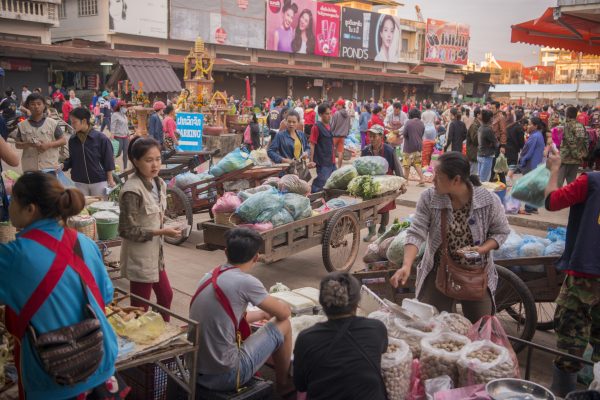A decade of colossal debt accrual and economic mismanagement by communist authorities in Laos has finally tipped the country towards bankruptcy, with its foreign reserves incapable of meeting its loan obligations without outside help.
Long lines for fuel, rapidly rising food prices, and the inability of households to pay their monthly bills have also led to rare public criticism from around the land-locked country where authorities take a dim view of anyone who disagrees openly with government policies.
It would be too easy to blame China, which accounts for about 47 percent of Laos debt accumulated on the back of major infrastructure project, and its “debt traps,” which have left their mark on countries like Pakistan, Sri Lanka, and Fiji.
Nor is the war in Ukraine or the crushing impact of the COVID-19 pandemic an excuse. The chief reason behind Laos’ economic collapse is the perennial thorn in the side of many Asian countries: corruption.
Prime Minister Phankham Viphavanh has admitted as much, telling the National Assembly this week that embezzlement by executives and staff, combined with poor management, are the main reasons for the chronic losses racked-up by 178 state enterprises.
“Administration of these enterprises typically did not follow a sound business plan. In addition, the recruitment of executives and staff was largely based on nepotism, with these factors being the main reason for deep-seated management failure,” state-run media said, politely.
Warnings, at least from this publication, about Laos’ festering debt problems date back 10 years.
But the damage is done and the immediate problem is the livelihoods of 7.3 million Laotians who rank among the poorest populations on the planet and have witnessed a significant widening in the wealth gap, prompting more warnings from the Asian Development Bank.
Today annual foreign debt servicing has grown to $1.4 billion from $1.2 billion in 2018 and just $160 million in 2010, when external debt servicing could be met with domestic income.
By the end of last year, according to World Bank figures, Laos public debt stood at 88 percent of gross domestic product and foreign debt at $14.5 billion. Vientiane needs $1.3 billion a year to meet its obligations until 2025 but only holds about $1.2 billion in foreign reserves.
In a desperate bid to prop up the economy the government is offering about $340 million worth of bonds at a staggering six-month interest rate of 20 percent. Sources told Radio Free Asia that the bond issue is “for everyone except commercial banks and financial institutions.”
However, few believed the government would be capable of meeting such a generous rate designed to combat inflation running at 12.8 percent, and described by many as “too good to be true.”
Phankham has served as prime minister since March last year. He was vice president for the previous five years and has served as executive secretary of the communist party’s executive committee since 2011.
For more than a decade the prime minister has been a significant player who also failed to heed the warning signs when formulating the deals and economic policy that has pushed Laos to the point of sovereign default. His choices are now stark.
Because of Laos’ strategic position on China’s southern flank, Beijing might break with past practices and agree to a debt restructuring. The alternative is to go cap in hand to the International Monetary Fund (IMF), like Pakistan and Sri Lanka, and ask for a bailout.
An IMF intervention would come with strings attached, and lots of them. Frugal spending policies would be enforced and to some extent Laos’ economic sovereignty would be eroded.
But the greater irony in rescuing Laotians from an incompetent government that rules by force would be the use of what is essentially a U.S.-Western financial institution to pay-off Chinese debts that were incurred despite the warnings, made loud and clear.


